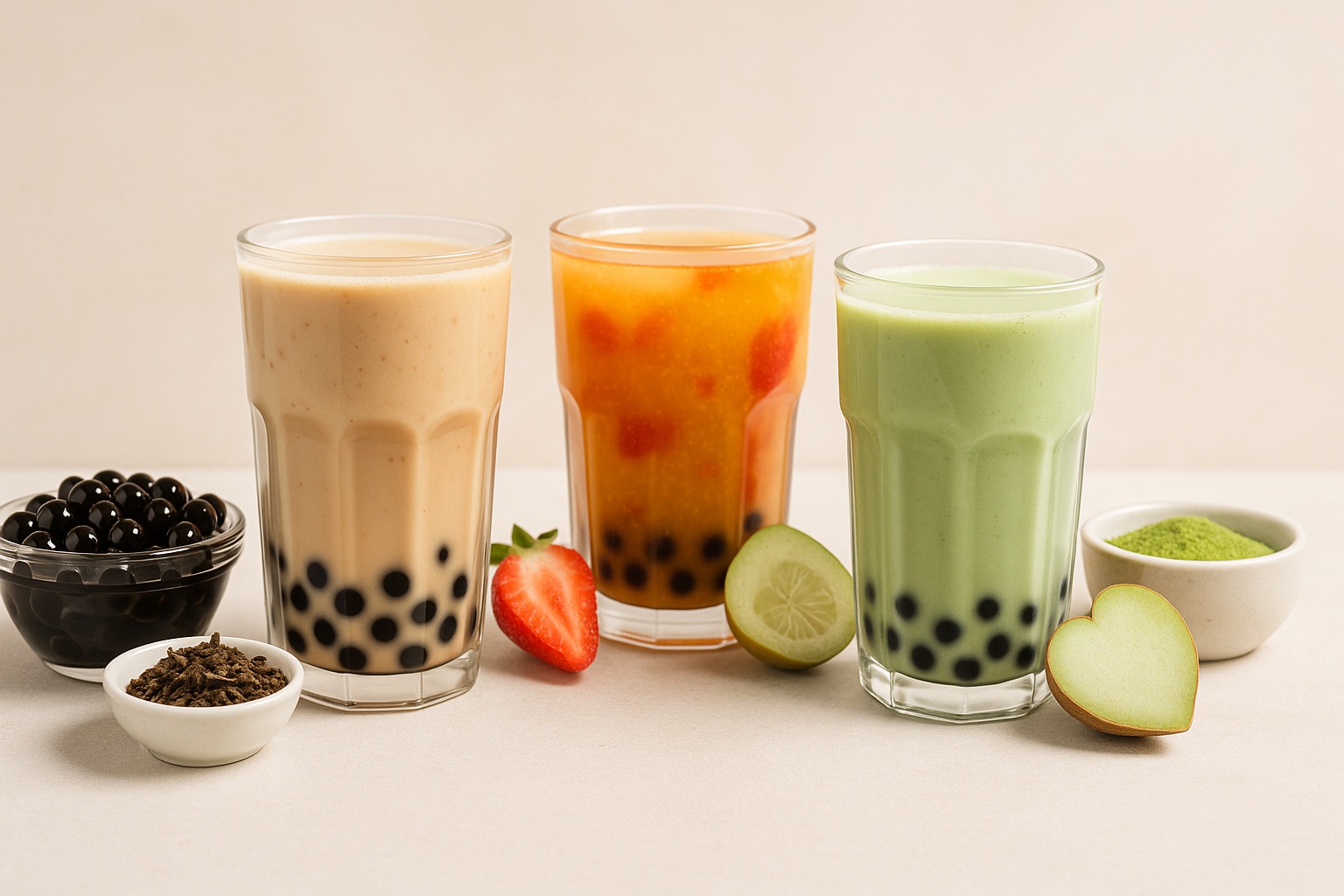How Consumer Taste Preferences Shape the Bubble Tea Industry

Bubble tea, once a niche street beverage from Taiwan, has now evolved into a global phenomenon. Its success story is not simply about the drink itself, but about how it adapts to shifting consumer taste preferences. From classic milk teas with chewy tapioca pearls to plant-based, fruit-forward, and low-sugar innovations, the industry's growth reflects the delicate balance between authenticity and adaptation.
Regional Flavor Preferences: A Global Snapshot
Asia: Tradition Meets Indulgence
In Asia—particularly Taiwan, where bubble tea originated—consumers still gravitate toward the classics. Black sugar tapioca pearls with fresh milk, jasmine green tea, and oolong-based drinks remain favorites. Here, authenticity and nostalgia drive demand. However, younger demographics also embrace seasonal fruit teas and colorful add-ons, highlighting the region’s dual pull: heritage and novelty.
Europe: Health-Conscious and Natural
European consumers often approach bubble tea through the lens of health and wellness. Reduced sugar, organic teas, and plant-based alternatives (such as oat milk or almond milk) are on the rise. This market also values sustainable packaging and traceability—knowing where the ingredients come from. In this region, growth is closely tied to transparency and clean-label sourcing.
North America: Experimental and Bold
In North America, bubble tea thrives on creativity. Matcha, taro, cheese foam toppings, and even seasonal flavors like pumpkin spice or salted caramel have been widely accepted. For this audience, bubble tea is not just a drink—it is an experience, a customizable treat, and often a social media centerpiece.
The Psychology Behind Taste Preferences
Consumer preferences in bubble tea are influenced by more than just flavor:
-
Cultural identity – Drinks that evoke familiarity or connect with heritage are more easily adopted.
-
Health consciousness – Low-sugar, low-calorie, and natural ingredients appeal to consumers balancing indulgence with wellness.
-
Visual appeal – Social media platforms reward drinks that are colorful, layered, and photogenic.
-
Novelty seeking – Younger demographics often drive demand for unique textures and experimental flavor combinations.
By understanding these motivations, businesses can design menus that resonate emotionally with consumers—not just appeal to their taste buds.
How the Industry Responds
To stay competitive, bubble tea businesses must constantly innovate while securing a reliable supply chain. Sourcing becomes critical:
-
Cafés in Europe may prioritize fruit syrups made with natural extracts.
-
North American franchises may require bulk tapioca pearls wholesale to handle high demand.
-
Start-ups in emerging markets might look for a bubble tea supplier in Taiwan to guarantee product authenticity and consistency.
This dynamic demonstrates that consumer taste does not merely influence the menu—it directly shapes supply chain strategies, product development, and even brand identity.
Beyond Taste: The Emerging Priorities
While flavor is central, other factors increasingly affect consumer choices:
-
Sustainability – Eco-friendly straws and biodegradable cups can tip customer loyalty.
-
Customization – Allowing control over sugar levels, ice amounts, and toppings is now an expectation rather than a luxury.
-
Global fusion – Cross-cultural blends, like Thai bubble tea or matcha latte with pearls, highlight how local trends merge with global ideas.
Conclusion
The bubble tea industry is a living example of how consumer preferences drive product innovation and market expansion. From Asia’s heritage-driven classics to Europe’s health-conscious blends and North America’s experimental creations, the beverage continues to adapt and thrive.
For businesses, success lies in listening closely to these evolving tastes while building trustworthy partnerships with suppliers. After all, the ability to deliver consistent quality—whether in tapioca pearls, syrups, or tea bases—remains the foundation of every successful bubble tea brand.
Contact Us
If you are looking for a reliable bubble tea supplier in Taiwan or need high-quality tapioca pearls wholesale to meet the demands of your market, our team is here to support you. We provide consistent quality, flexible solutions, and export experience to help your business grow.
Contact us today to explore how we can work together in shaping the next chapter of bubble tea worldwide.

